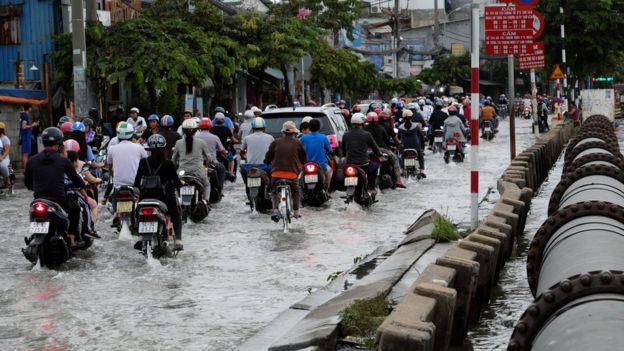
2018 marks a critical stage in the global climate negotiations process. By the end of this year, governments will meet in Poland to finalize the so-called "rulebook" of the Paris deal, agreed in the French capital in December 2015.
This is seen as a key test.
The rules will define the ways in which every country reports on their emissions and on their carbon-cutting actions and, importantly, how they will increase these actions in the years ahead.
But while rich and poor countries united in Paris to push through the deal, significant ruptures have re-appeared in wrangles over key technical details.
The developed nations want almost all countries to share the same set of rules on how carbon emissions are measured, reported and verified. This issue, called "transparency" in the negotiations, has run into difficulties with many emerging economies arguing for more "flexibility".
According to some observers, the richer countries believe that some in the talks are trying to turn the clock back to the time when only wealthier countries had any commitments to cut carbon, while developing countries including India and China had no obligations.

Scientists predict that sea level rise caused by climate change will cause more floods such as these in Bangkok
"The EU, US, and other developed countries are worried about the slow pace of negotiations on transparency and other elements of the Paris rulebook," said Alden Meyer from the Union of Concerned Scientists.
"And what they see as the efforts of some developing countries to reintroduce bifurcation into the climate regime - an argument they thought had been settled in Paris."
The developing nations are, in turn, incensed that enthusiasm for the $100bn per year in climate finance support from the rich, due to start in 2020, has started to wane.
"It has been frustrating to hear some developed countries celebrate their climate leadership even as they fall well short of the modest commitments they have made over the years," said Thoriq Ibrahim, environment minister for the Maldives and chairman of the Alliance of Small Island States, one of the key groups of poorer nations in the talks.
"If we spent as much time working on this problem as we do congratulating ourselves for caring so deeply about it, we would be closer to an outcome worthy of a celebration.
"As it stands, we haven't mobilized nearly enough resources to tackle this problem and until developed countries match their rhetoric with action our survival will continue to hang in the balance."
Talanoa dialogue
The government of Fiji currently holds the presidency of the UN talks and has been trying to inspire greater efforts to cut greenhouse gases - they've introduced an international conversation called the Talanoa Dialogue to push countries to do more. But a UN summary of written submissions to this process reflects the frustrations."The scale and pace of climate action must increase dramatically, and immediately so," it says.
While the furore over the decision of US President Donald Trump to withdraw his country from the Paris agreement has died down for now, there are likely to be other flashpoints as the talks progress.
One such issue is the question of the influence of fossil fuel companies on the talks. Some campaigners want the UN to firm up the rules to ensure there are no conflicts of interest.
"The fossil fuel industry and its trade association proxies have undermined climate action for decades yet the UN continues to allow these obstructionist to pull a chair up to the table," said Jesse Bragg from Corporate Accountability.
"If we are to avert the worst effects of climate change and truly realize the promise of Paris, parties must first resolve to eject the presence of the very industry at the core of this crisis once and for all."
The talks in Bonn will run until May 10
Meanwhile people in drought ridden countries struggle to get enough food to survive.
There should be another program underway. Developed countries should provide more humanitarian aid, engineers, technicians and equipment and teach arid countries how to build canals, dams and irrigation ditches and how to desalinate sea water. If developing countries are helpless at convincing the world to slow climate change, at least teach them how to deal with it.











































